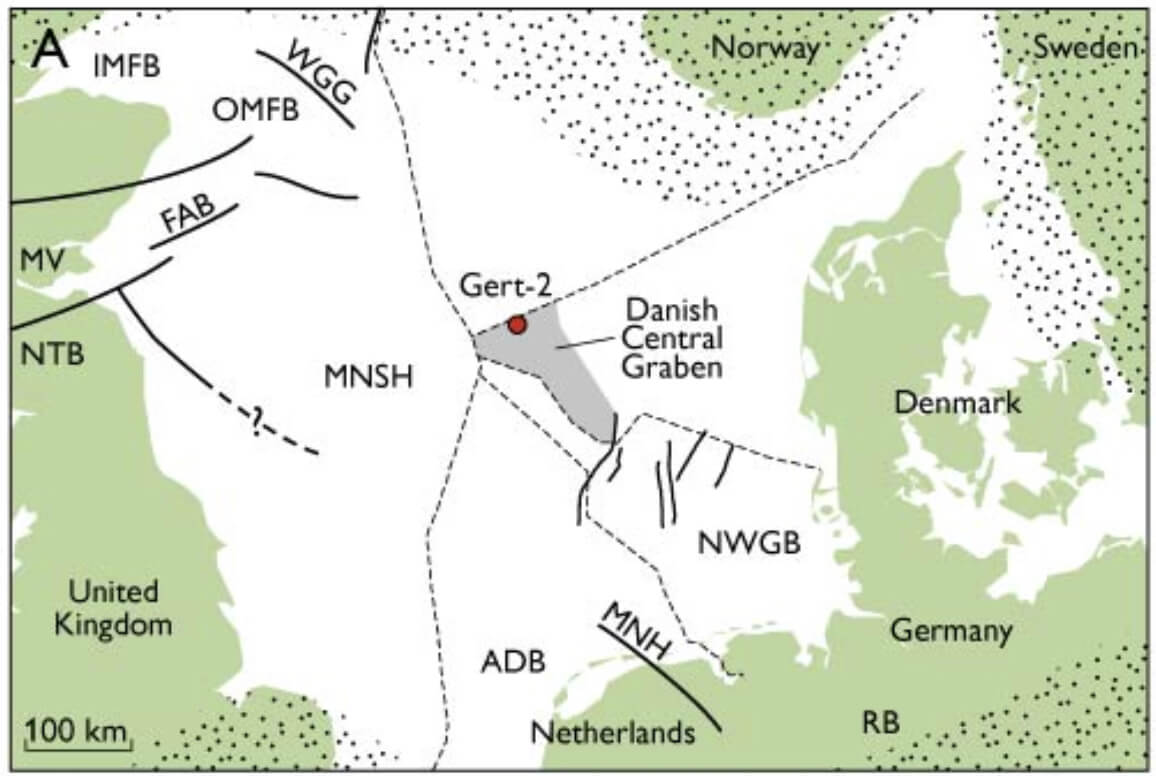
How to Cite
Share
Abstract
The Central Graben in the North Sea is a mature petroleum province with Upper Jurassic – lowermost Cretaceous marine shale of the Kimmeridge Clay Formation and equivalents as the principal source rock, and Upper Cretaceous chalk as the main reservoirs. However, increasing oil prices and developments in drilling technologies have made deeper plays depending on older source rocks increasingly attractive. In recent years exploration activities have therefore also been directed towards deeper clastic plays where Palaeozoic deposits may act as petroleum source rocks. Carboniferous coaly sections are the most obvious source rock candidates. The gas fields of the major gas province in the southern North Sea and North-West Europe are sourced from the thick Upper Carboniferous Coal Measures, which contain hundreds of coal seams (Drozdzewski 1993; Lokhorst 1998; Gautier 2003). North of the gas province Upper Carboni-ferous coal-bearing strata occur onshore in northern England and in Scotland, but offshore in the North Sea area they have been removed by erosion. However, Lower Carboniferous strata are present offshore and have been drilled in the Witch Ground Graben and in the north-eastern part of the Forth Approaches Basin (Fig. 1A), where most of the Lower Carboniferous sediments are assigned to the sandstone/shale-dominated Tayport Formation and to the coal-bearing Firth Coal Formation (Bruce & Stemmerik 2003). Highly oil-prone Lower Carboniferous lacustrine oil shales occur onshore in the Midland Valley, Scotland, but they have only been drilled by a single well off shore and seem not to be regionally distributed (Parnell 1988). In the southern part of the Norwegian and UK Central Graben and in the Danish Central Graben a total of only nine wells have encountered Lower Carboniferous strata, and while they may have a widespread occurrence (Fig. 1B; Bruce & Stemmerik 2003) their distribution is poorly constrained in this area. The nearly 6000 m deep Svane-1/1A well (Fig. 1B) in the Tail End Graben encountered gas and condensate at depths of 5400–5900 m, which based on carbon isotope values may have a Carboniferous source (Ohm et al. 2006). In the light of this the source rock potential of the Lower Carboniferous coals in the Gert-2 well (Fig. 1C) has recently been assessed (Petersen & Nytoft 2007).
How to Cite
Share
Copyright (c) 2007 Henrik I Petersen, Hans P Nytoft

This work is licensed under a Creative Commons Attribution 4.0 International License.
Downloads
Edited by Martin Sønderholm and A.K. Higgins
The Review of Survey activities presents a selection of 17 papers reflecting the wide spectrum of activities of the Geological Survey of Denmark and Greenland, from the microscopic to the plate-tectonic level.
Activities in Denmark: The Survey's field of activities in Denmark is illustrated by three papers on [...]









